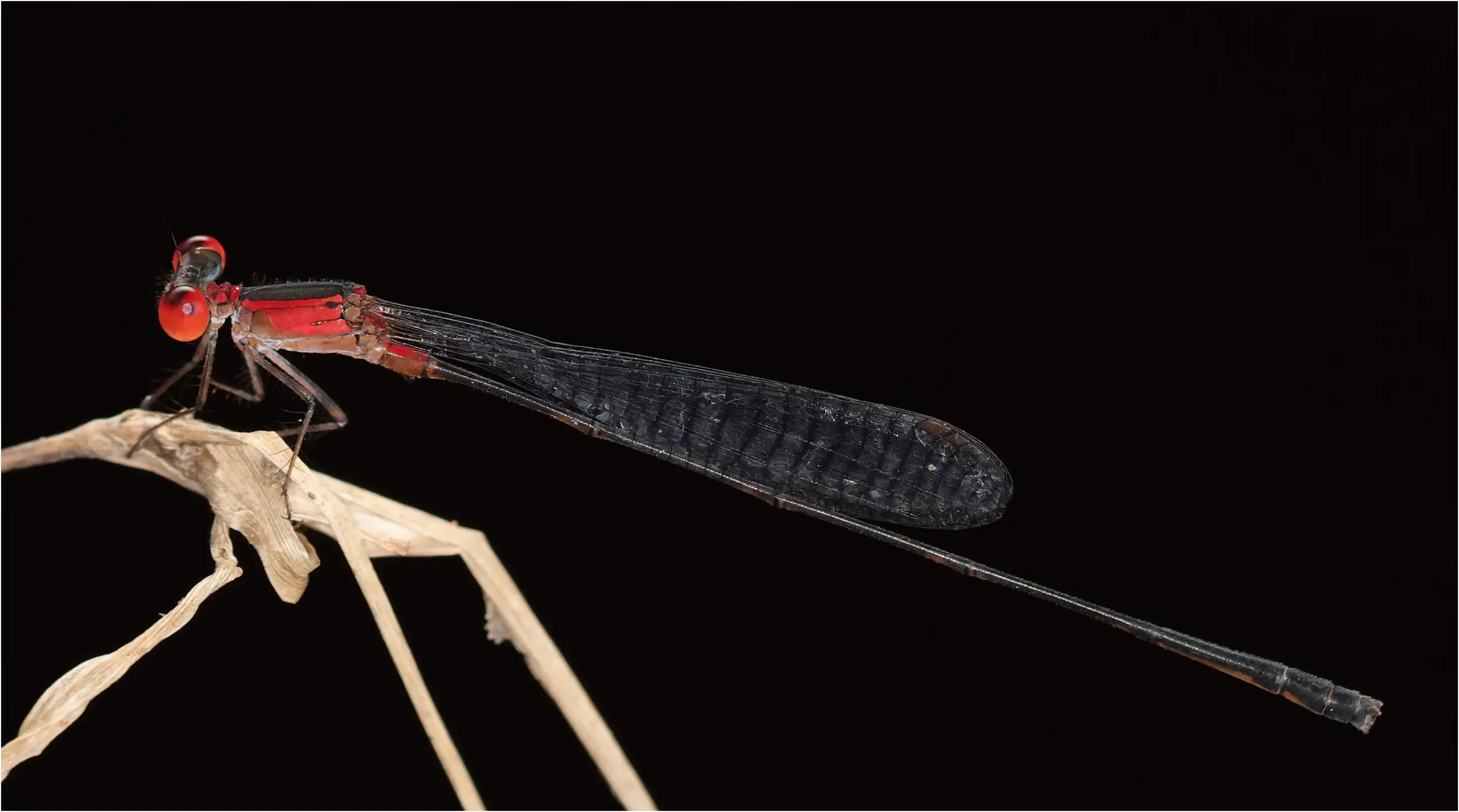
« Elattoneura » aurantiaca male is an easily identifiable Platycnemididae; the face is black, the eyes are red like the pronotum, the dorsal part of the thorax is black, the lateral parts red, the base of the thorax light brown, like the lateral face of the first segment, the rest of the abdomen is black.
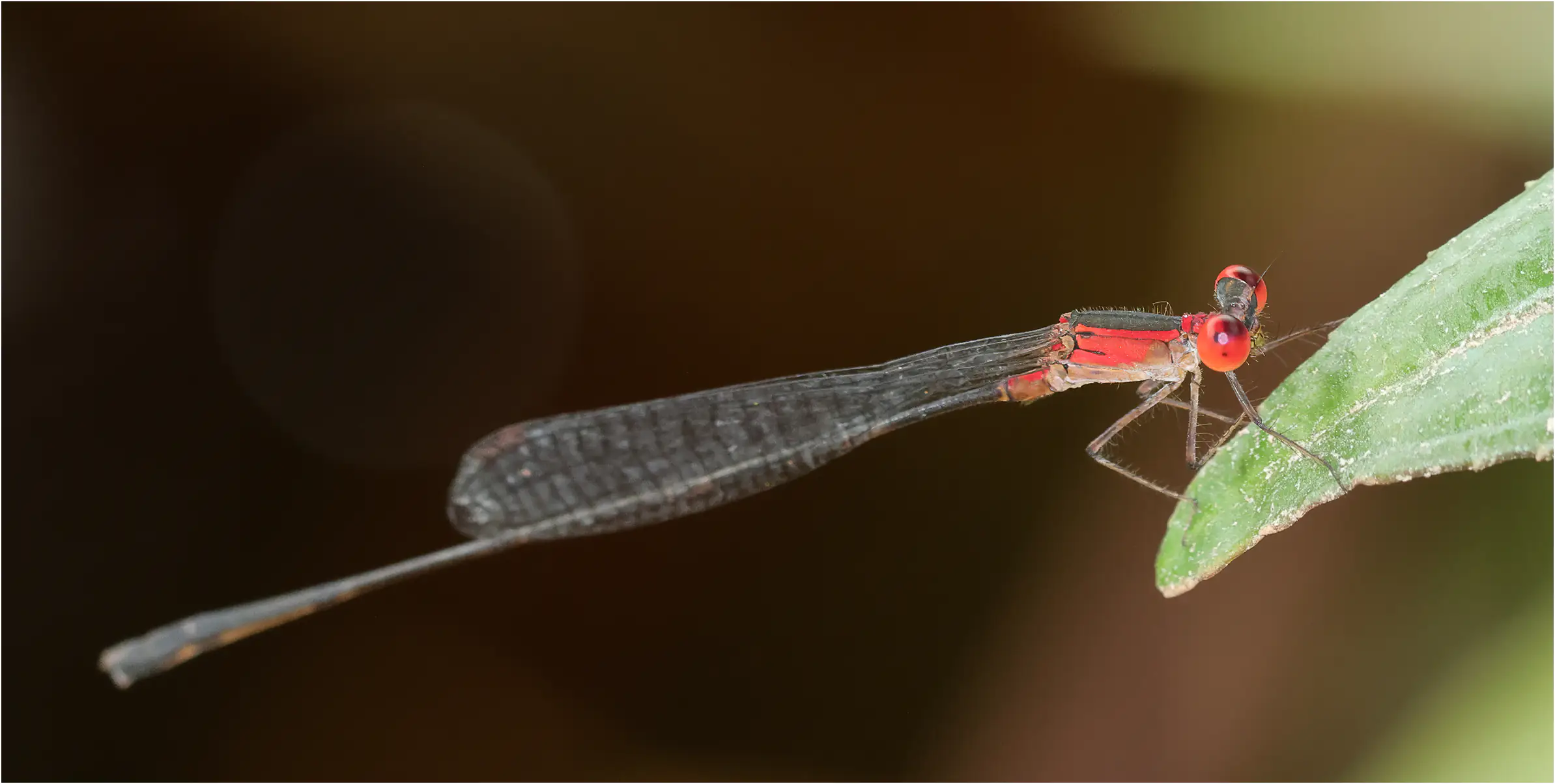
I knew the genus Elattoneura from having contacted E. glauca in Namibia; I was therefore surprised to encounter other members of the genus in Sarawak. But, after all, Ischnura senegalensis, another zygopteran, is as present in Africa as in Asia (and Borneo). This is to say that I was not really surprised that Rory Dow (1) put quotation marks around the genus name: « Note that the southeast Asian species currently placed in Elattoneura certainly do not belong there, but are left there until the issue of their true genus is resolved, so inverted commas are used around the genus name to emphasize this. »
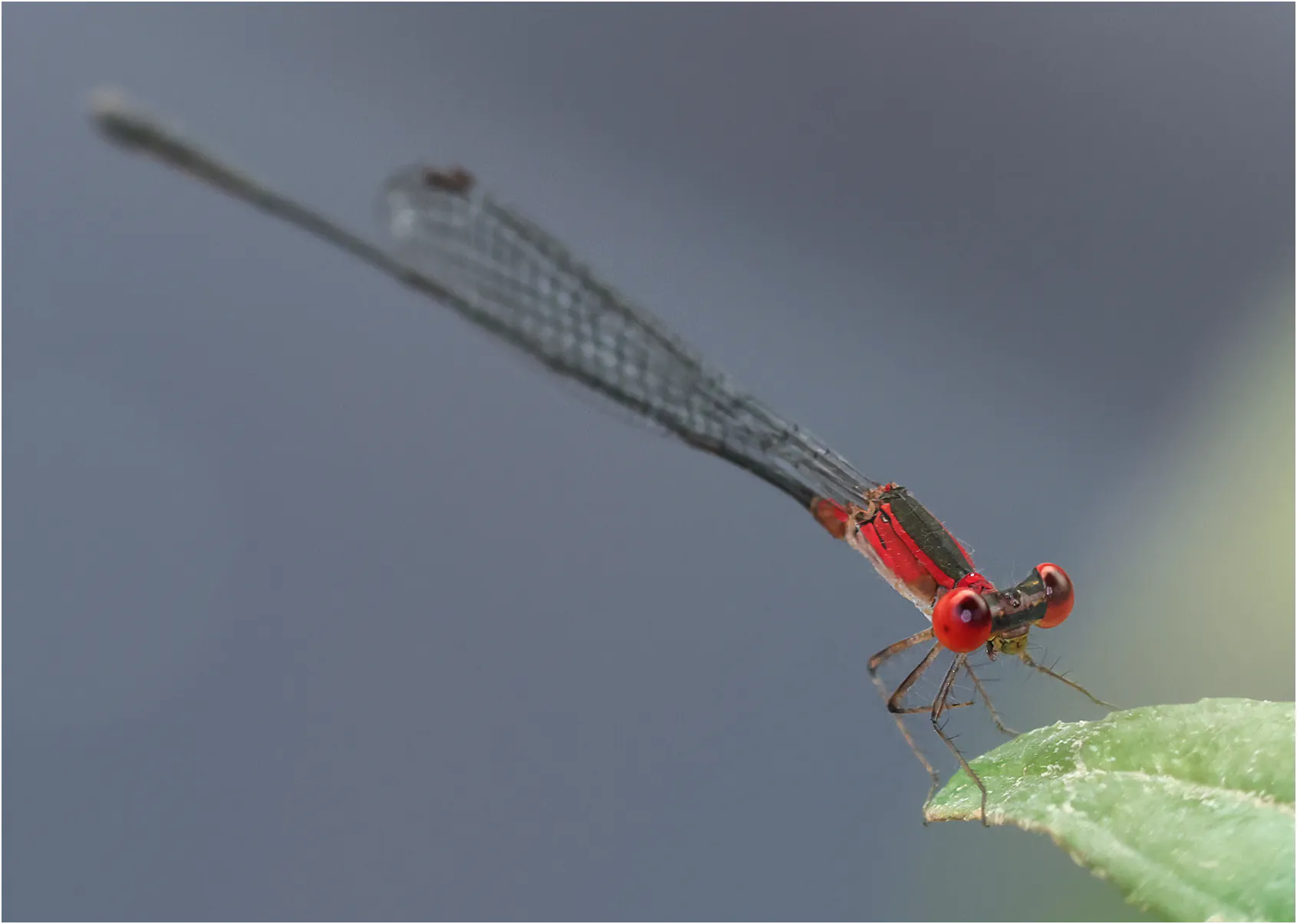
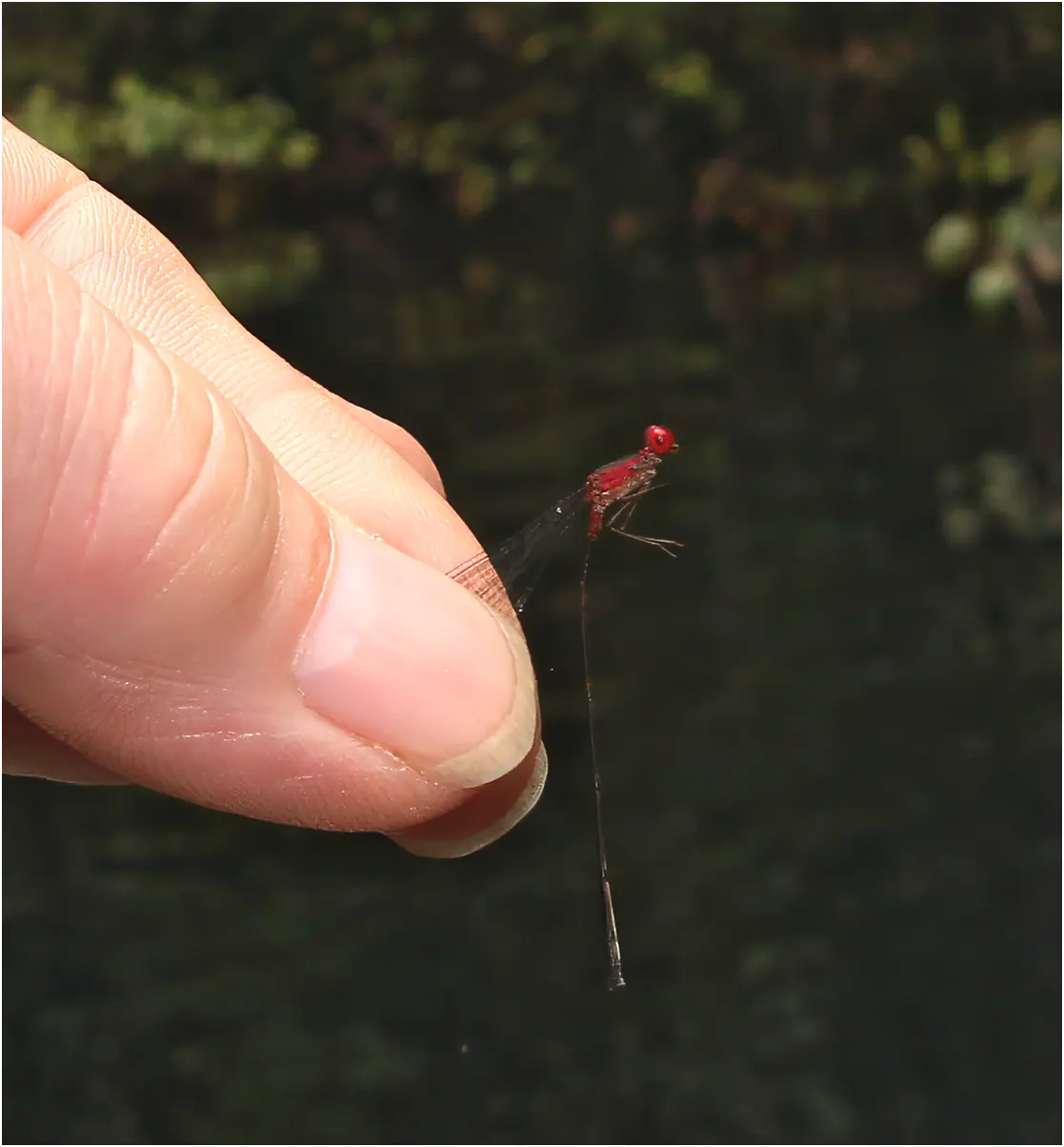
It was described by Selys (2) under the name Disparoneura aurantiaca, and it was Cowley in 1935 who included it in the genus Elattoneura on the basis of venation criteria. Selys tells us that its abdomen measures 33-34 mm (33.5 mm for AG Orr (3)) which gives a total length of 39 mm.
To give an idea of its size, see the photo opposite: while we were in a boat on one of the rivers that runs through Maludam National Park, this subject got into my backpack… (03/29/2025).
Its habitat consists of slow-moving rivers in the forest and it seems to depend on Pandanus (here drawn by Wallace, in 1855, in Sarawak); these are shrubs with long, spiny leaves, carried by pseudo-stems resting on a system of pyramid-shaped stilt roots. It is likely that this root system provides perfect shelter for the larvae of this « Elattoneura ».
Males were extremely common all along these channels, sharing the space with Pseudagrion coomansi and Libellago hyalina. But when you go a little deeper into the vegetation, when it gets darker, you only encounter females and immature males.
Maludam National Park, Malaysia, Sarawak, Pandanus forest, 03/28/2025.
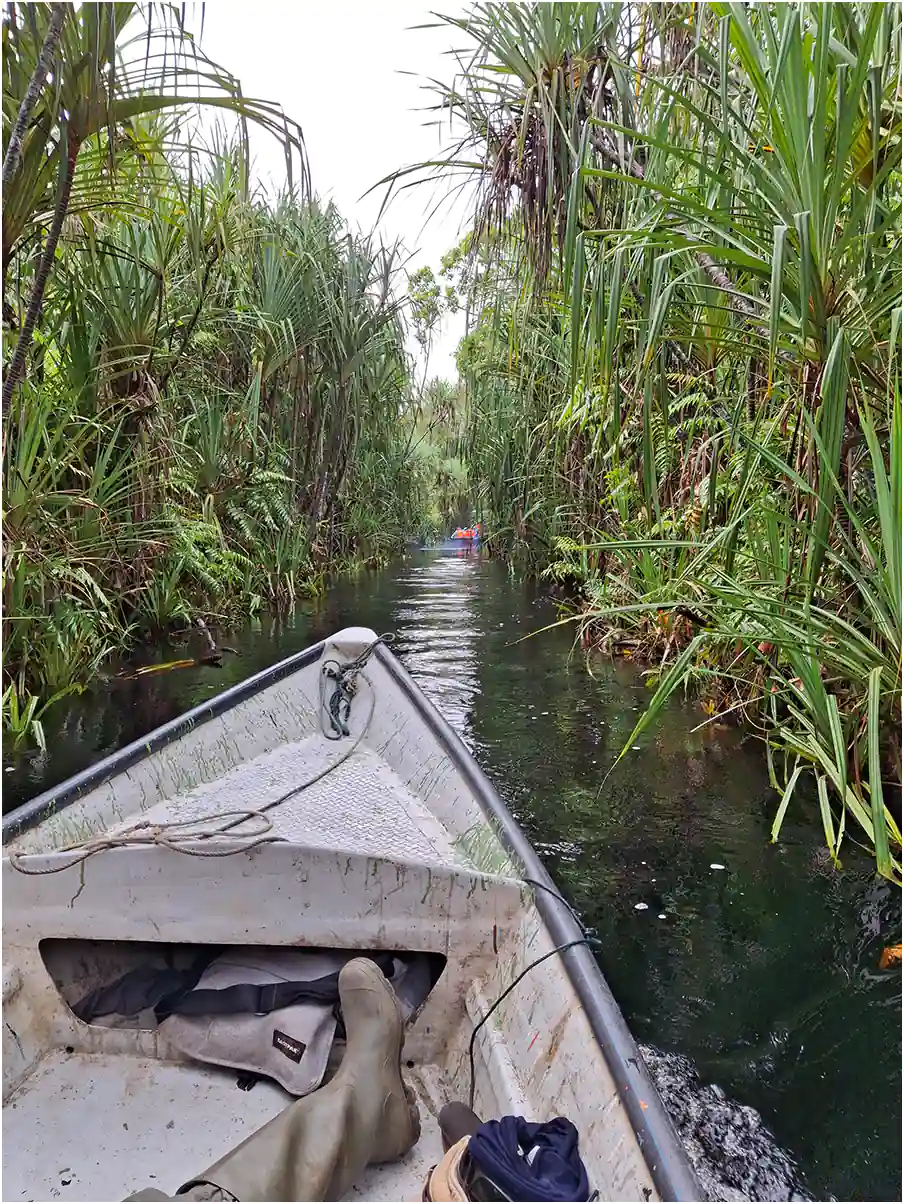
Below is a friendly face to face with a male Libellago hyalina.
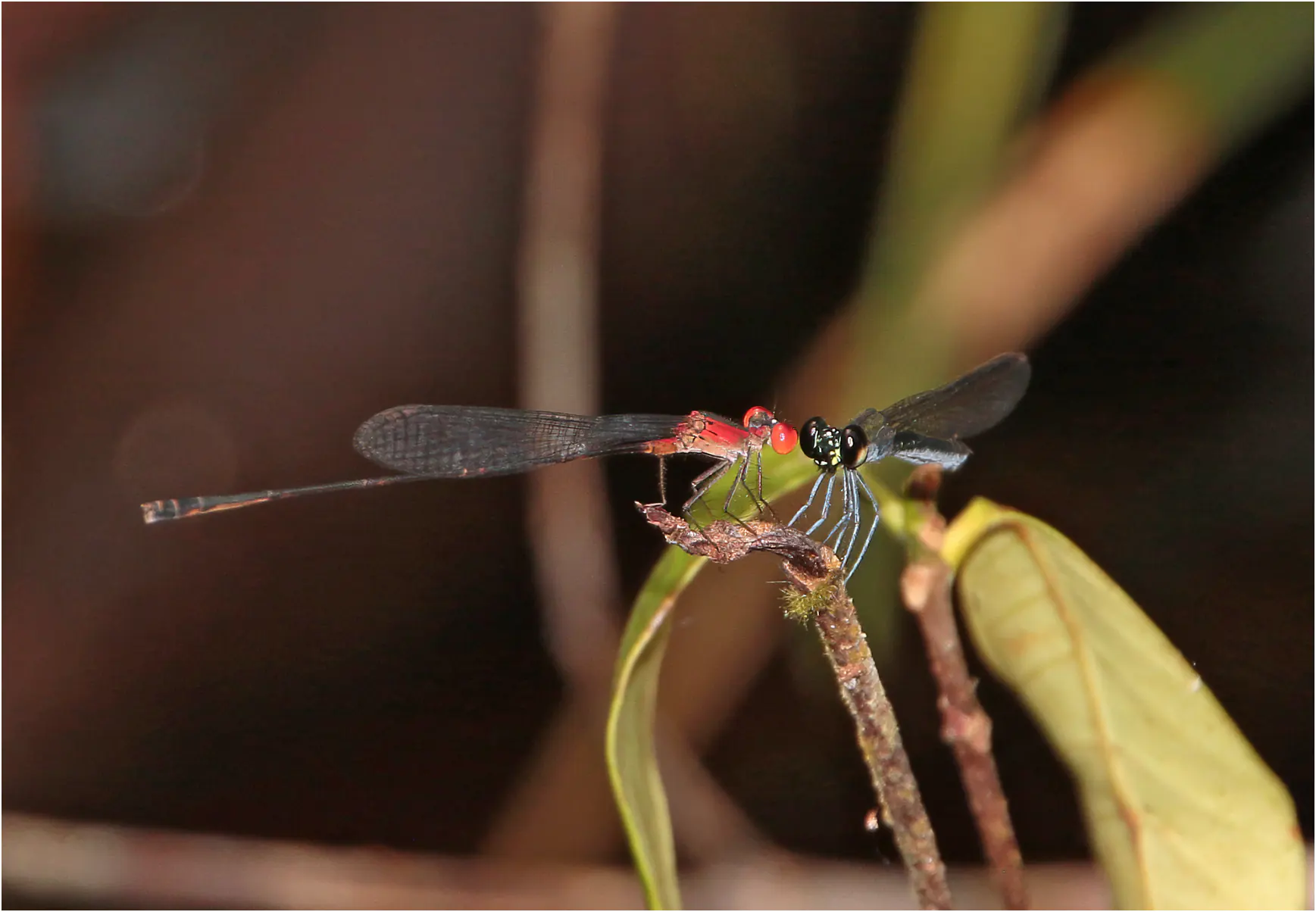
Its distribution, certainly in decline due to the specificity of its habitat, places it in Borneo, on the Malay Peninsula and in Indonesia. IUCN Red List .
Below left, a young male: note the orange coloration which indicates a still immature individual.
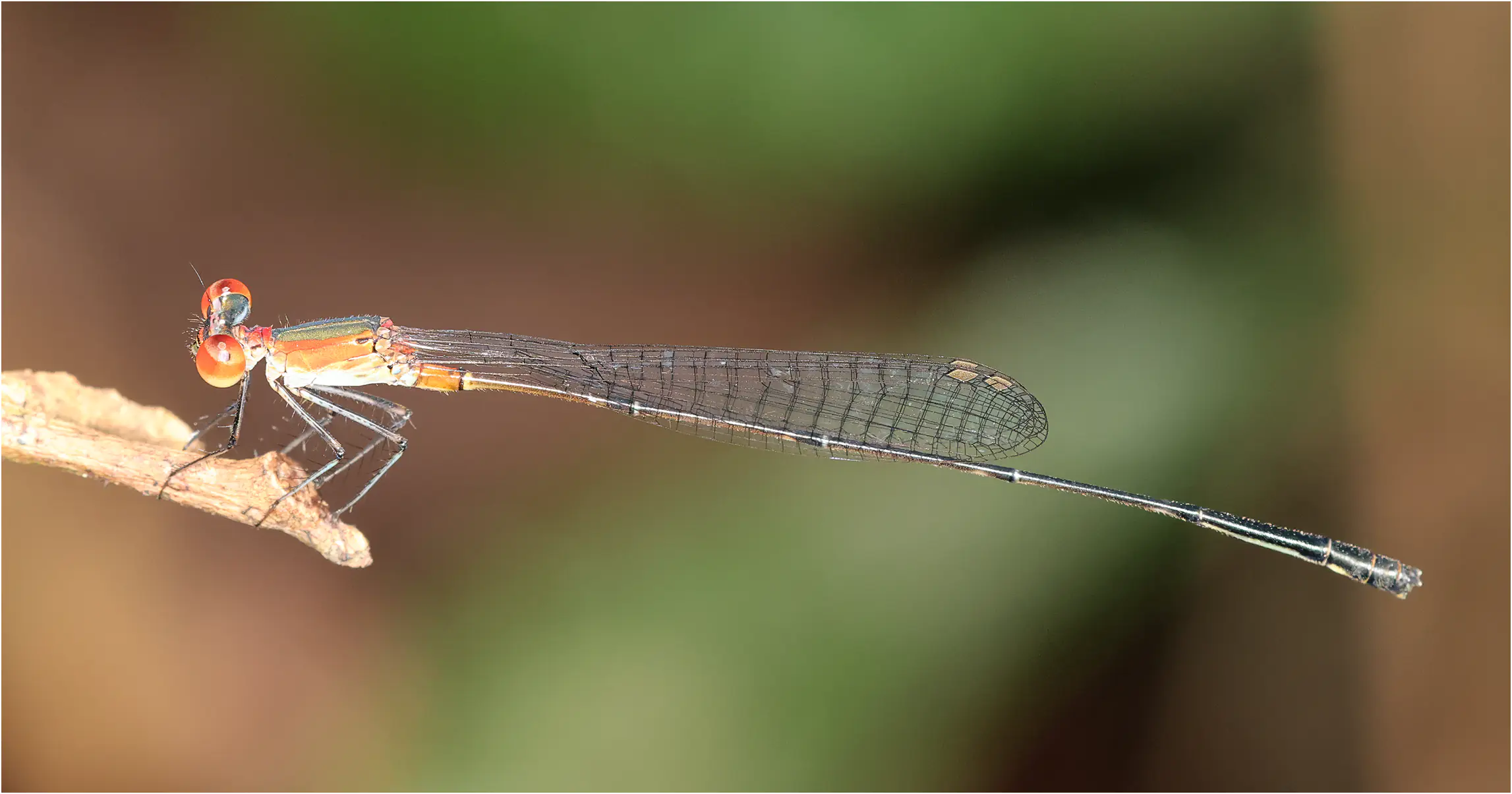
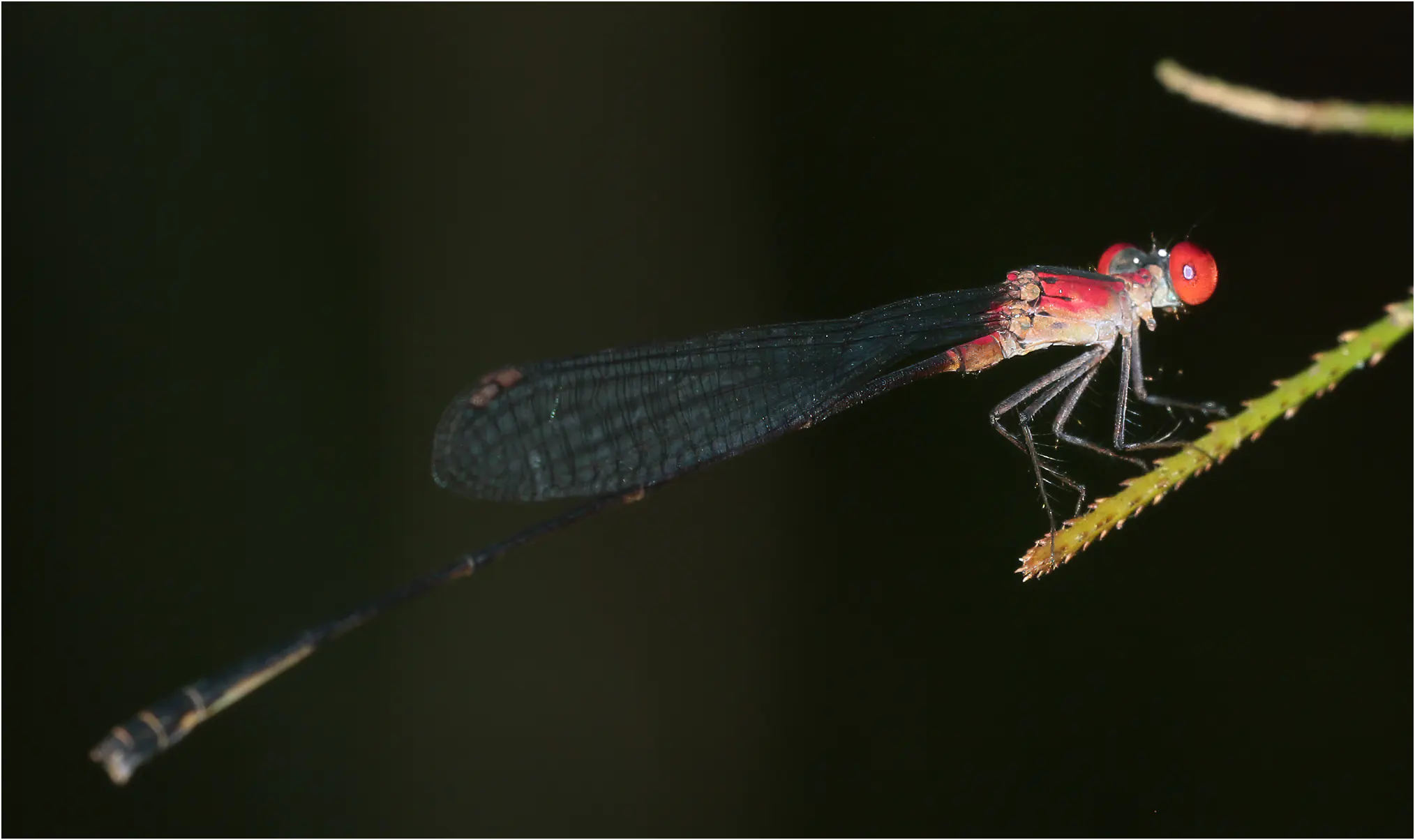
The females, more discreet and much fewer, are magnificent! Their coloring changes considerably with age. Below, the one on the left is undoubtedly the youngest, because we note the shiny wings and the very pale color of the blue of the lower part of the eye. The one on the right does not appear young; yet the top of its eye only has a small blue spot, and perhaps on the contrary they lose this blue coloring as they age.
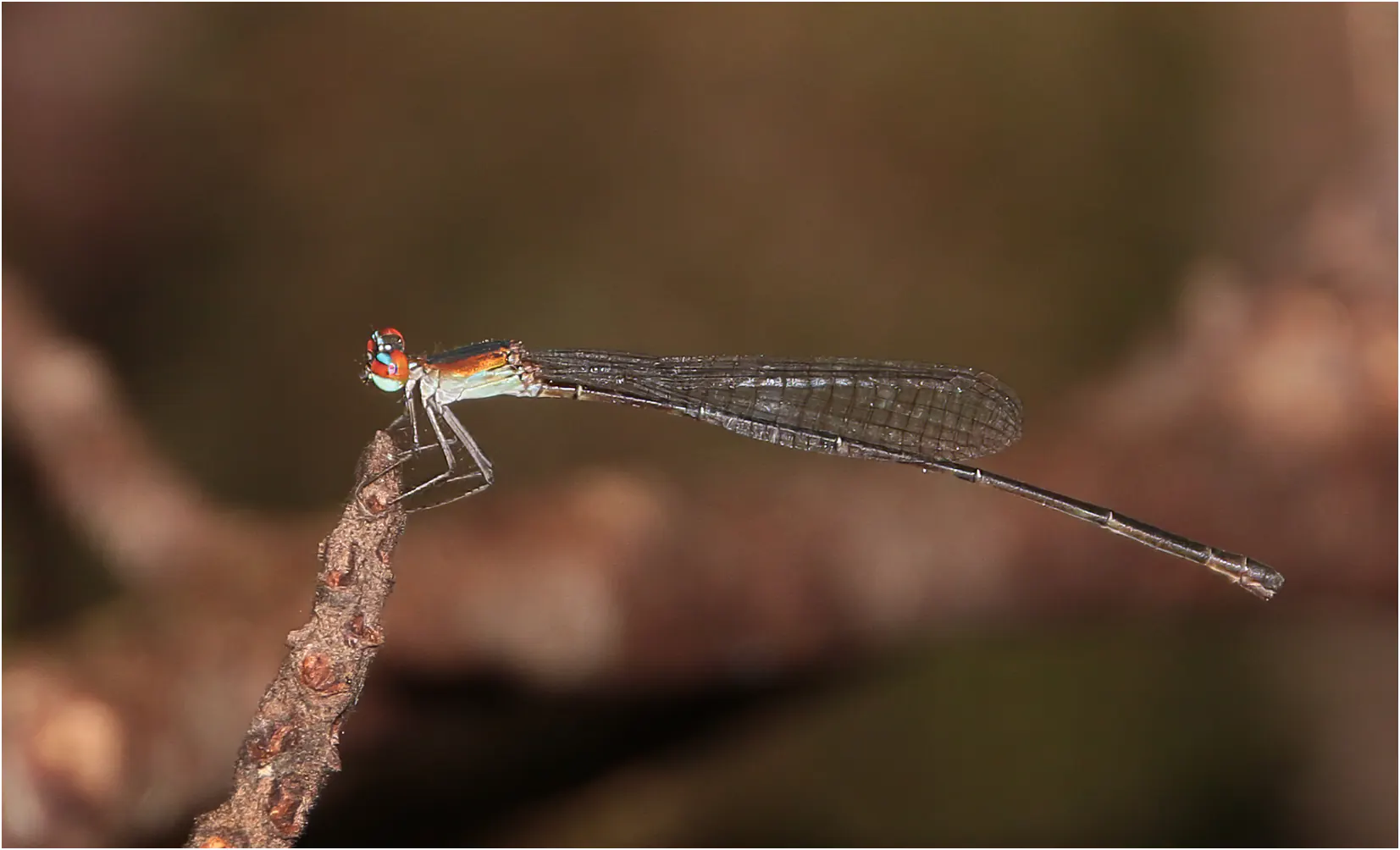
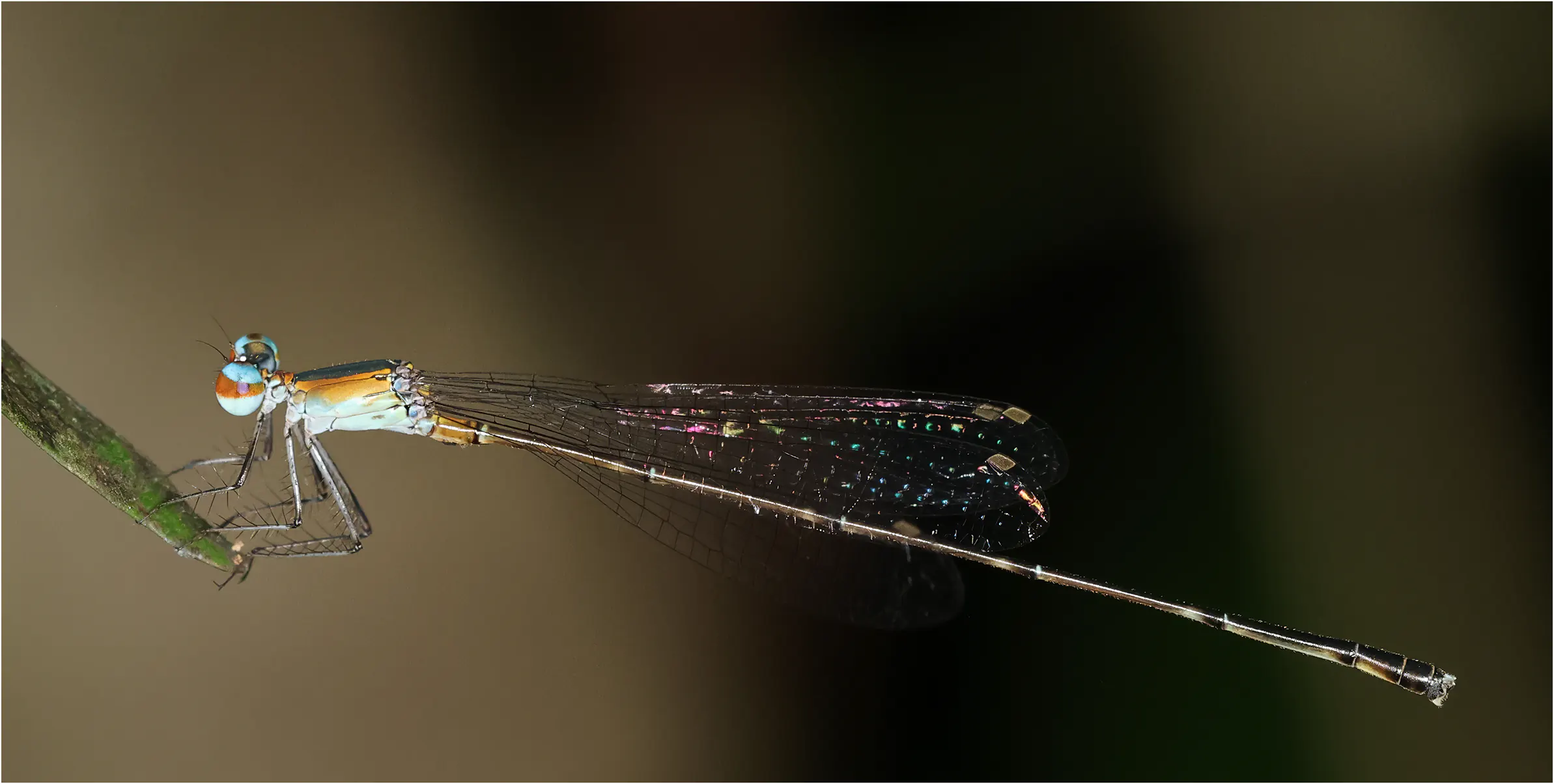
We find the same detail on the female on the left below, while the one on the right is fully mature.
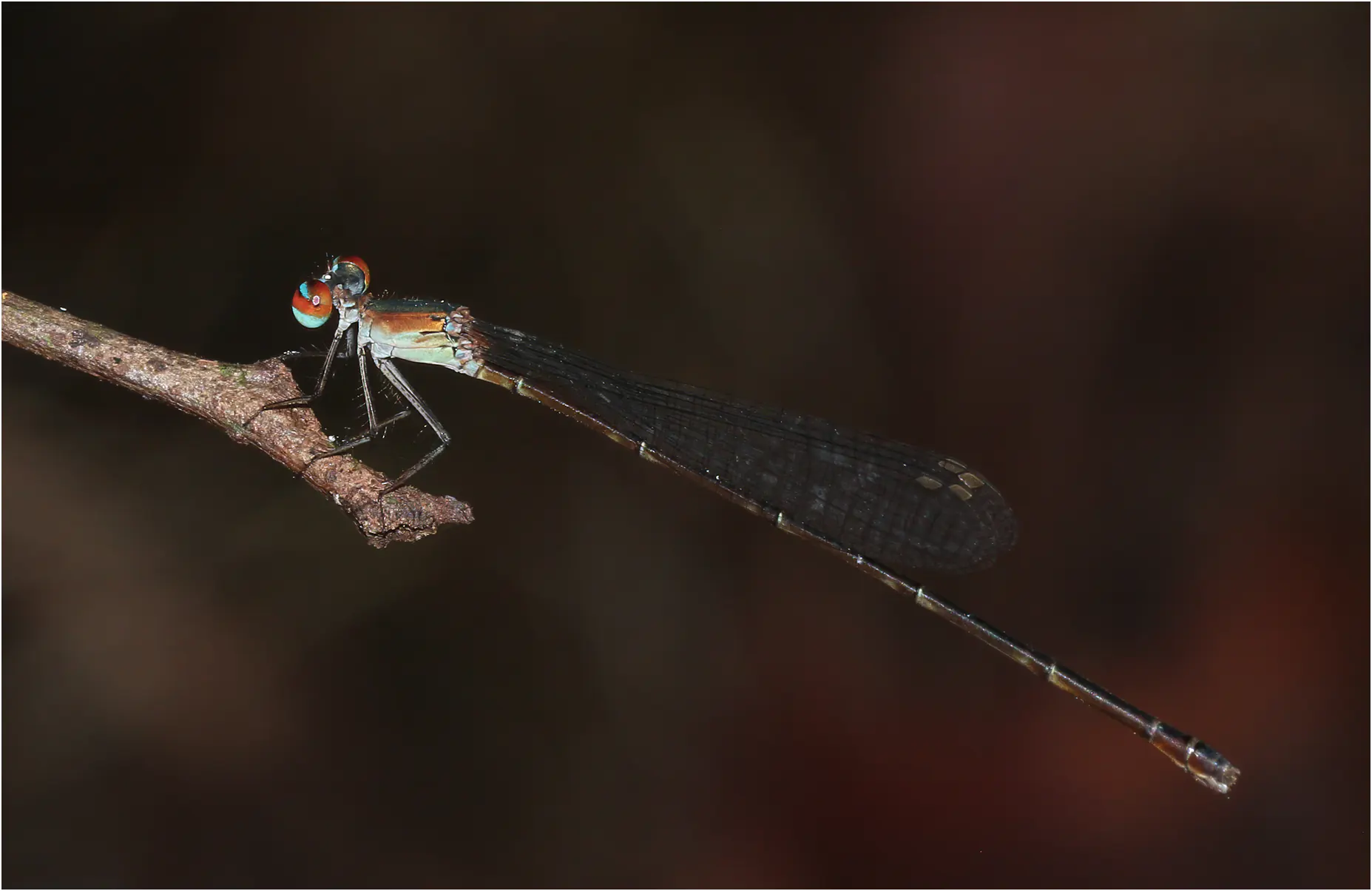
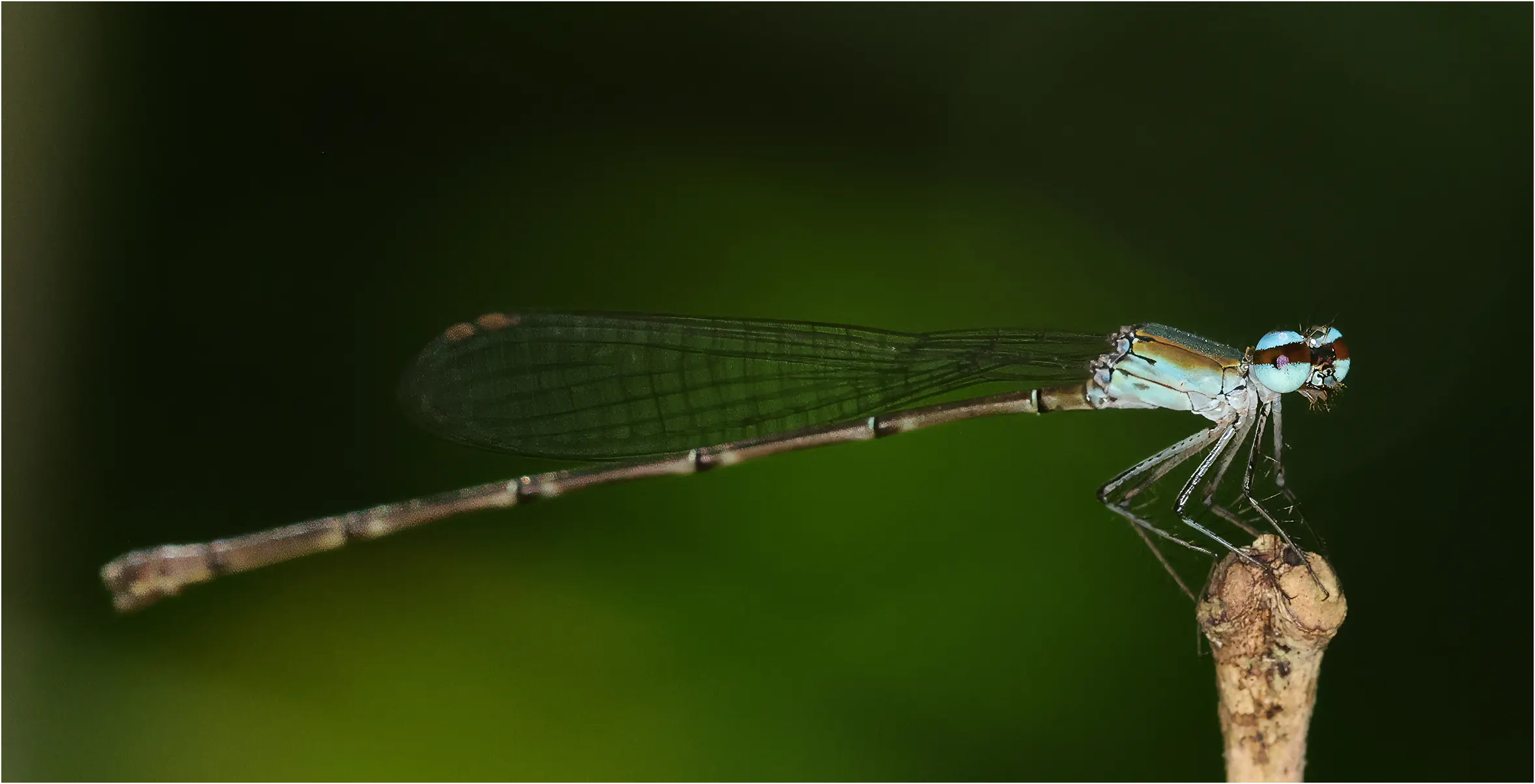
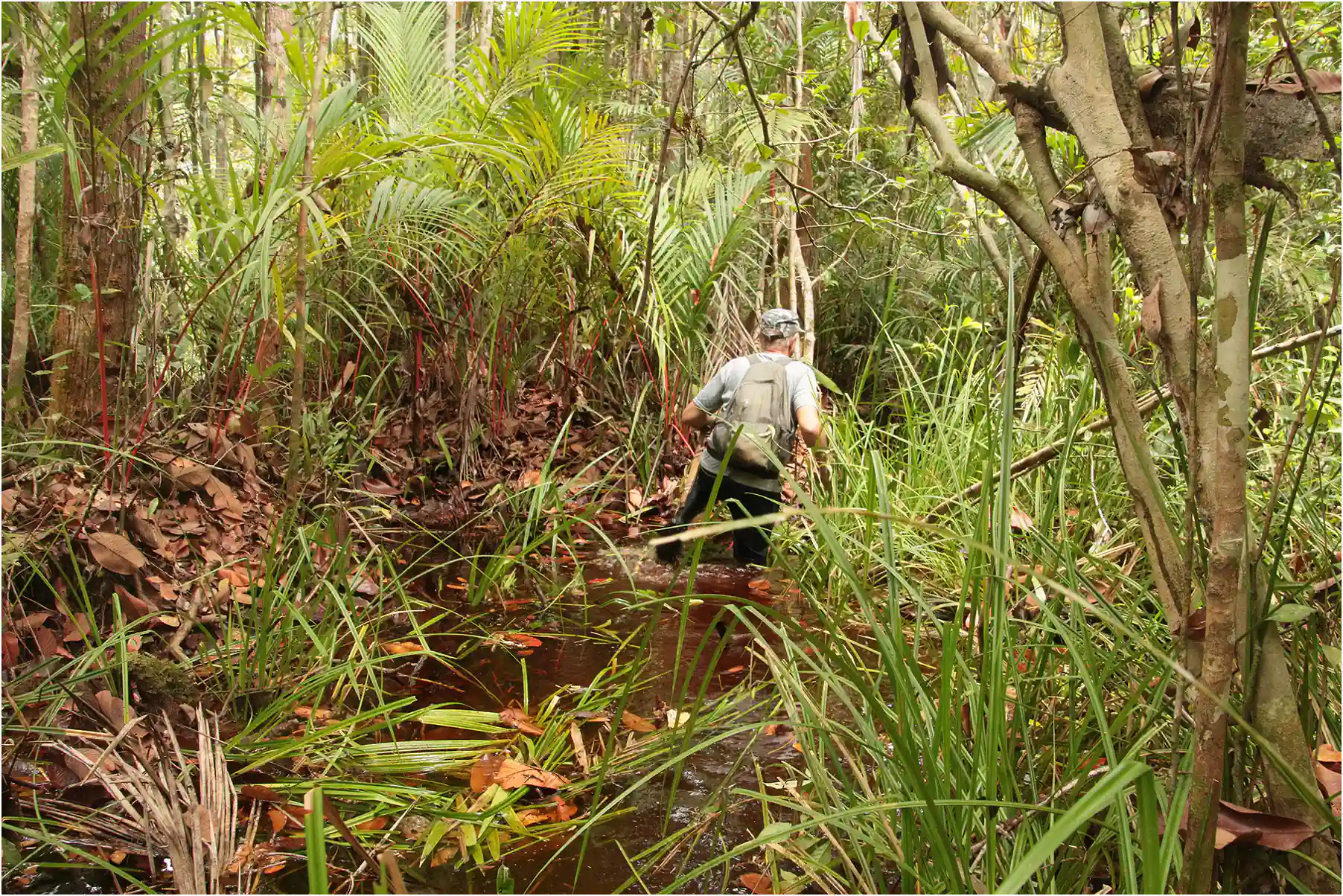
All these females were photographed quite far inside the national park, in the forest, both pandanus, but also with larger trees, but always in a flooded environment; these are swampy peatlands whose waterlogged soil prevents the decomposition of leaves, branches and trunks and makes progress very difficult as Rory Dow shows us.
And this environment did not suit me, because just after photographing this magnificent female below, while descending from a stump, an invisible branch under the chocolate-colored water gave way under my weight and I lay down in the water with all my equipment: my camera did not recover… Fortunately, our stay was almost over.
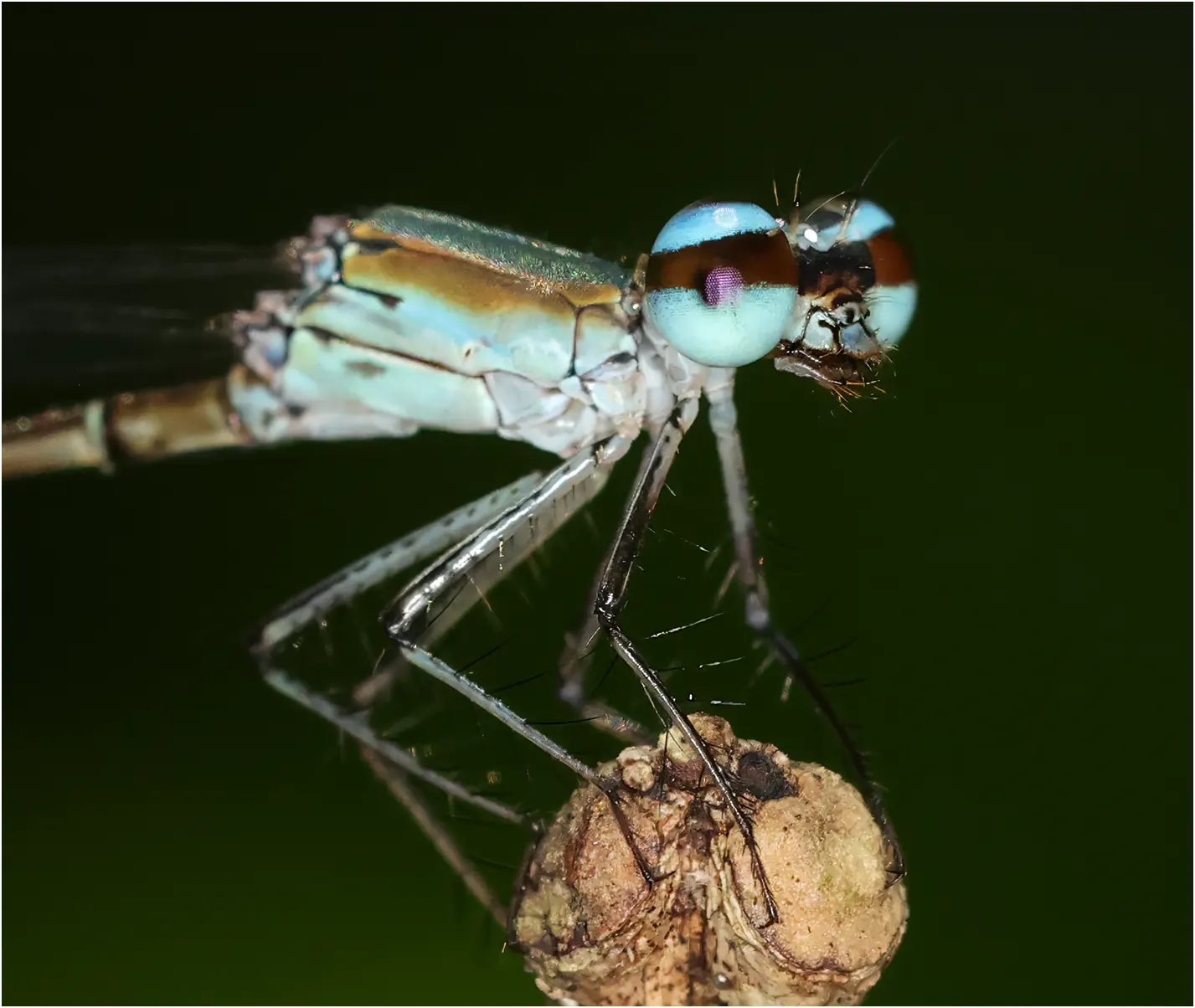
Etymology
Elattoneura (4) from the Greek ellaton, for smaller, and neuron, which in entomology is translated as vein in a wing. This is in reference to the reduced length of a vein, which is referred to in the systematics of Zygoptera.
Aurantiaca, from the Latin aurantiacus which means orange. Selys worked on collector’s items, necessarily discolored, and he writes: « Prothorax orange. Devant du thorax orange-vif, … » – « Orange prothorax. Front of the thorax bright orange, … »
-1 Dow, Butler, Reels, Steinhoff, Stokvis & Unggang,2019 – Faunistic Studies in Southeast Asian and Pacific Island Odonata – Journal of the International Dragonfly Fund – No. 27.
2- Selys, 1886 – Révision du Synopsis des Agrionines – Première partie, p. 169.
3- A.G. Orr, 2005. Dragonflies of Peninsular Malaysia and Singapore- Natural History Publications (Borneo).
4- Dragonflies and Damselflies of Namibia, Frank Suhling & Andreas Martens, Gamsberg Macmillan, 2007